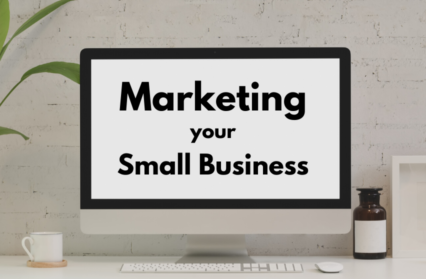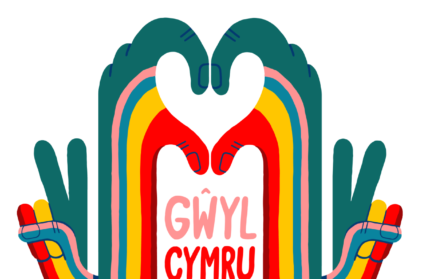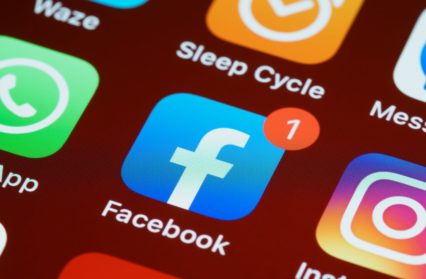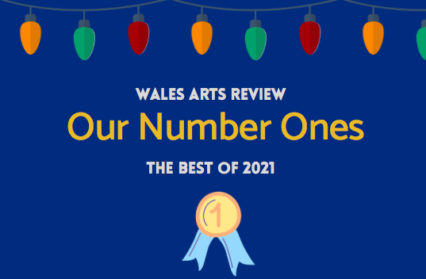What’s the best way of marketing your small business in lockdown? It’s a strange new world out there, with everyone staying home and normal sales channels closed. With this new series of articles, Rosie Johns will help you lock down a new marketing strategy for your small business. We’ll cover a range of topics such as social media, email marketing and lockdown content. Whether you’re working solo or managing a small team, these tips, techniques and tutorials will help you boost the online presence of your business, reach new audiences and maintain your vital income throughout the lockdown.
Marketing your small business with social media
The first in this series of lockdown marketing guides is a whistle-stop tour of how to use social media to market your small business effectively, for free.
Most of us are now spending vastly more time at home and it’s natural that as a result, our time on social media has gone way up as well.
You might not realise it but social media is more than just a fun way of wasting time – it’s also a powerful sales and marketing tool: 43% of people use social media to research products they want to buy, and 52% of online brand discovery happens in social media feeds (We Are Social, 2019). If you‘re not already using social media to market your business, you should be!
Importantly (with budgets and overheads to consider), you don’t need to spend any money to make your social media marketing a success. Simply master the basics and you’ll be well on your way to building and growing an engaged audience.
Let’s get started.
The three biggest social media platforms, and the best ones for you to focus your energy on, are Facebook, Twitter and Instagram. Each one works slightly differently and needs different content, so try to avoid posting the same thing on all three platforms. Read the tips below to find out more.
Facebook
Confidently the market leader, Facebook has 2.5 billion users. It’s the world’s 3rd most visited website (only beaten by Google and YouTube) and with its focus on personal connections, the ideal place to build up relationships with your audience.
How do I start?
If you don’t already have one, set up a Facebook page for your business. In order to do this, simply log into your personal account and click the ‘create’ button in the top navigation bar. You will then be guided through all the steps to create your page. At the end, make sure you add a username – for continuity, you should try to make sure this username is the same for all your other social media accounts. If you already have a Facebook business page, you can always change its username in the About section.
To help make your page a success, add an attractive profile picture (ideally your logo or a photo of you) and a cover image (for instance, a nice picture of one of the products/services you offer). Make sure to add as much detail as you can to the Page Info section, including ways for potential customers to contact you, a website link if you have one, and a detailed description of your business and what it offers. All of this will help make your page more discoverable and appealing. Finally, invite all your Facebook connections to like your page.
What next? The key to great social media marketing is consistency – in order to keep your audience interested and engaged, you have to post regularly on the platform. But don’t worry, by regularly I don’t mean every couple of hours! Try to post a maximum of once or twice a day on Facebook and you’ll be doing great.
What should I post? Try to post a variety of content on your page. This could include work-in-progress photos, wholesome stories from the media that you can tie in to your business, newsy posts about how you’re operating in lockdown, and pictures of your products – with information on how and where to buy them. Here is a great example from Cardiff-based foodie business Dusty Knuckle which really effectively markets their product (probably the best pizza in Cardiff). They’ve included an eye-catching photo and an easy explanation of how you can make a purchase. Honestly, I might take a break and do that right now…
Who fancies supporting the NHS & a local pizzeria at the same time? ????????For every purchase of our Rainbow Pizza we are…
Posted by Dusty Knuckle on Thursday, April 30, 2020
My page doesn’t have a big audience yet. How can I make it more popular? Growing your audience might take a little while, especially if your page is new to Facebook. The first step is to make sure you’ve invited all your friends to like your page, and encouraged them to tell other people about it – word of mouth is a powerful tool.
The next step is to post good, shareable content on your page (the kind we’ve just spoken about). As soon as someone shares your content, it will be seen by people your brand is new to.
Another good way of promoting audience growth is to run giveaways.
Offer: something small. Perhaps a pizza? (Dusty Knuckle – I’m looking at you)
Set an end date: allow enough time for the giveaway to be shared far and wide – 1-2 weeks is good
Conditions: make the giveaway really easy to enter. For instance, state that to enter people simply have to like your page and tag a friend in the comments (this way you are getting people to share your post with friends, and you can easily contact the winner by replying to their comment).
In the end, it should look something a little like this:
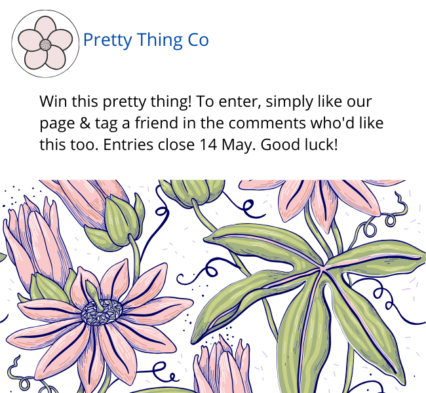
Giveaways are brilliant for gaining extra page likes, but remember that your ultimate goal is to keep people interested – it’s no good if all those extra likes disappear after the giveaway ends. To maintain your audience, you’ll have to keep posting interesting content.
I don’t have lots of nice images to share. What can I do? It’s a good idea to try and create visual content as people love images and videos – posts which include either of these elements perform on average twice as well. If your business isn’t very visual (perhaps you offer workshops or other services), consider putting a face to your brand by including photos of yourself and your team – if you have one – in your social activity. If this isn’t an option or you’d prefer to stay out of the spotlight, you can always create your own graphics instead! Canva is a brilliant, free, easy-to-use tool with plenty of templates and artwork you can use.
At first glance, Twitter can seem a bit daunting. It’s a loud, hectic mess compared to Facebook and involves a lot more shouting into the ether than close, personal relationships. But on the plus side, it’s much easier to connect with new people on Twitter – you can utilise hashtags to join in with trending topics, you can engage with other brands and individuals much more easily, and you can share other people’s content as often as creating your own.
How do I start? If you’re completely new to Twitter, simply sign up with an account for your business by entering your business name and either a mobile number or email; Twitter will then take you through the profile set-up process.
It’s important to note that your name isn’t the same as your handle (the username that appears after the ‘@’ symbol). Twitter will automatically assign you a handle when you create your account, but it’s good practice to change it to match your other social media accounts – you can do this in the Settings and Privacy section. If the specific handle you want is taken, try adding a descriptor like ‘Co’ or ‘HQ’.
If you already have a personal Twitter account, don’t be tempted to combine it with marketing your business. It is more effective to create a separate Twitter account for your business where you can market your brand and products without diluting this message.
How often should I tweet? As Twitter is a busier platform it pays to put content up more frequently – try to aim for around 5 tweets a day. This may sound like a lot but keep in mind that Twitter is designed for short, punchy messages. Share links to your website (if you have one), photos of what you’re up to, and articles you find interesting. If you find it easier, use Tweetdeck to schedule your tweets – simply log in with your Twitter details and you can schedule everything in advance.
How can I build connections on Twitter? Make sure to engage with other Twitter users – share and like their tweets, leave comments and encourage conversation. Twitter really puts the ‘social’ into social media: you’ll find people are much more receptive to your content if you engage with theirs, too.
How do I use hashtags? Using a hashtag on Twitter groups your tweet with every other instance of that hashtag. For example, if you use #LockdownUK, people will see your tweet when they search for this hashtag.
Sometimes by using a hashtag that is trending you can insert your brand into a much bigger conversation and be visible to a larger audience. You can see a list of trending hashtags on the right-hand side of your Twitter feed.
Visual by nature, Instagram demands beautiful photos. So if your business isn’t one that translates easily into images, this may not be the platform for you. But if it does, then dive in – Instagram is a great place to advertise your business and can generate a significant number of sales.
Set up an account on your phone. Instagram is designed to be used on a phone, so unfortunately this isn’t one you can manage entirely from your laptop (though apps like Hootesuite allow you to schedule content on other devices). Download the Instagram app and create an account – use an email or phone number (instead of signing up via Facebook) so that you can create a username.
How often should I post? Like Facebook, it works best to only post once or twice a day on Instagram. The reason you shouldn’t post too often is because the app’s algorithm looks at your content – if you post too often and people don’t engage, the system will start showing it to fewer and fewer people (yikes!) So, it really is quality over quantity here.
What should I post? As I’ve mentioned, this platform is all about pretty images. The most successful Instagram profiles are real eye-candy and deliver a series of images that all fit together well. Find a theme and a ‘look’ for your business and stick to it: for instance this could be bright, minimalist images, or busy lifestyle shots. It’s really up to you.
Are hashtags good on Instagram? Yes! Hashtags are what make your Instagram content discoverable – think of them like keywords for a search engine. Use specific hashtags that relate to your business, your local area, your products and your audience. You can even create your own hashtags (e.g. the name of your company, or a particular product line). But don’t go overboard – while there isn’t really an optimum number of hashtags, typically brands include between two and five. Placing them at the end of your post is a good technique to stop your content looking spammy.
How can I drive sales? If you have money to spend, advertising on Instagram (and Facebook, who own it) is really cheap and effective (here’s a handy guide). But let’s focus on what you can do for free. While you can’t embed links in your posts, you can add a whole load of URLs to your profile with the aid of Linktree. This free tool is brilliant if you want to direct people to a number of pages on your site. You can add clear headers for each link and even customise the colour scheme. Find out more about it here. Once you’ve set up your links, it’s easy to direct people to them from your instagram posts – simply include the line ‘link in bio’ and make sure the URL is clearly labelled.
Key points to take away:
- Stay consistent and post regularly – the quickest way to fail with social media marketing is to neglect the platforms and your audience.
- Optimise your content for each platform – conversational posts for Facebook, short snappy lines for Twitter, and pretty visuals for Instagram.
- It’s not all about you – engage with your audience (and with other companies) and you’ll be much more popular.
- Be yourself – to find people who are going to love you and be loyal to your business, show them what you stand for and what you’re offering.
- Stay positive – it might be a while before you feel comfortable using social media, but it’s a truly powerful tool and a brilliant way to connect with your audience so keep at it.
Other articles in this series…
Marketing your small business: social media
The first in this series of lockdown marketing guides Rosie Johns takes us on a whistle-stop tour of how to use social media to market your small business effectively.
Email marketing for small business
Rosie Johns builds an all encompassing how-to-guide as we look at another great tool for any freelancer or small business looking to grow their audience: email marketing for small business.
Lockdown content: marketing your small business
Rosie Johns offers a guide to lockdown content and marketing techniques for small businesses and creatives. What kinds of content should I post and where?
Maintaining Customer Loyalty: Marketing your Small Business
In this guide Rosie Johns looks at something a little more tricky – how to maintain customer loyalty in lockdown.
Small Business Marketing Roundup
In the last article of the series, Rosie Johns offers a small business marketing roundup – all the most important tips and techniques from this series in one place. So at the end you’ll have everything you need to start marketing your small business (or yourself) more effectively!
Do you need additional advice, support or input from a marketing professional? Contact Rosie Johns. Services include individually tailored marketing plans, email marketing, social media marketing and content creation for websites, blogs and other platforms.
 Rosie has six years’ experience in marketing and communications, specialising in the arts and creative sectors. She has worked for companies including Cardiff’s Chapter Arts Centre and independent book publishers Seren. marketing your small business
Rosie has six years’ experience in marketing and communications, specialising in the arts and creative sectors. She has worked for companies including Cardiff’s Chapter Arts Centre and independent book publishers Seren. marketing your small business


